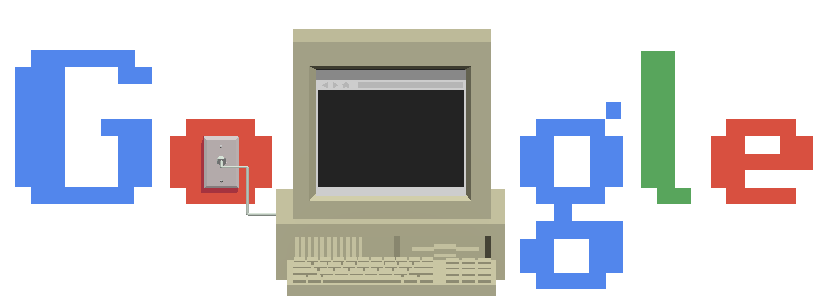(WWW) World Wide Web !

The World Wide Web (WWW),
commonly known as the Web, is an information space where documents and
other web resources are identified by Uniform Resource Locators (URLs, such as
https://www.example.com/), which may be interlinked by hypertext, and are
accessible via the Internet.[1] The resources of the WWW may be accessed by
users via a software application called a web browser.
English scientist Tim
Berners-Lee invented the World Wide Web in 1989. He wrote the first web browser
in 1990 while employed at CERN near Geneva, Switzerland.[2][3] The browser was
released outside CERN in 1991, first to other research institutions starting in
January 1991 and to the general public on the Internet in August 1991. The
World Wide Web has been central to the development of the Information Age and
is the primary tool billions of people use to interact on the
Internet.[4][5][6]

Web resources may be any type
of downloadable media, but web pages are hypertext media which have been
formatted in Hypertext Markup Language (HTML).[7] Such formatting allows for
embedded hyperlinks which contain URLs and permit users to easily navigate to
other web resources. In addition to text, web pages may contain images, video,
audio, and software components that are rendered in the user's web browser as
coherent pages of multimedia content.

Multiple web resources with a
common theme, a common domain name, or both, make up a website. Websites are
stored in computers which are running a program called a web server which
responds to requests made over the Internet from web browsers running on users'
computers. Website content can be largely provided by a publisher, or
interactively where users contribute content or the content depends upon the
users or their actions. Websites may be provided for myriad informative,
entertainment, commercial, governmental, or non-governmental reasons.
HISTORY OF WWW
/cdn.vox-cdn.com/uploads/chorus_image/image/63219191/Sir_Tim_Berners-Lee.0.0.jpg)
Tim Berners-Lee's vision of a
global hyperlinked information system became a possibility by the second half
of the 1980s.[8] By 1985, the global Internet began to proliferate in Europe and the Domain Name System (upon which the Uniform
Resource Locator is built) came into being. In 1988 the first direct IP
connection between Europe and North America was made and Berners-Lee began to
openly discuss the possibility of a web-like system at CERN.[9] On 12 March
1989 Berners-Lee issued a proposal, titled "Information Management: A
Proposal",[10] to the management at CERN for a system called
"Mesh" that referenced ENQUIRE, a database and software project he had
built in 1980, which used the term "web" and described a more
elaborate information management system based on links embedded in readable
text: "Imagine, then, the references in this document all being associated
with the network address of the thing to which they referred, so that while
reading this document you could skip to them with a click of the mouse."
Such a system, he explained, could be referred to using one of the existing
meanings of the word hypertext, a term that he says was coined in the 1950s.
There is no reason, the proposal continues, why such hypertext links could not
encompass multimedia documents including graphics, speech and video, so that
Berners-Lee goes on to use the term hypermedia.[11]
With help from his colleague
and fellow hypertext enthusiast Robert Cailliau he published a more formal
proposal on 12 November 1990 to build a "Hypertext project" called
"WorldWideWeb" (one word) as a "web" of "hypertext
documents" to be viewed by "browsers" using a client–server
architecture.[12] At this point HTML and HTTP had already been in development
for about two months and the first Web server was about a month from completing
its first successful test. This proposal estimated that a read-only web would
be developed within three months and that it would take six months to achieve
"the creation of new links and new material by readers, [so that]
authorship becomes universal" as well as "the automatic notification
of a reader when new material of interest to him/her has become
available". While the read-only goal was met, accessible authorship of web
content took longer to mature, with the wiki concept, WebDAV, blogs, Web 2.0
and RSS/Atom.[13]

The CERN data centre in 2010
housing some WWW servers
The proposal was modelled
after the SGML reader Dynatext by Electronic Book Technology, a spin-off from
the Institute for Research in Information and Scholarship at Brown University
The first web page may be
lost, but Paul Jones of UNC-Chapel Hill in North Carolina announced in May 2013
that Berners-Lee gave him what he says is the oldest known web page during a
1991 visit to UNC. Jones stored it on a magneto-optical drive and on his NeXT
computer.[17] On 6 August 1991, Berners-Lee published a short summary of the
World Wide Web project on the newsgroup alt.hypertext.[18] This date is sometimes
confused with the public availability of the first web servers, which had
occurred months earlier. As another example of such confusion, several news
media reported that the first photo on the Web was published by Berners-Lee in
1992, an image of the CERN house band Les Horribles Cernettes taken by Silvano
de Gennaro; Gennaro has disclaimed this story, writing that media were
"totally distorting our words for the sake of cheap
sensationalism".[19]
The first server outside
Europe was installed at the Stanford Linear Accelerator Center (SLAC) in Palo Alto , California

Berners-Lee's breakthrough
was to marry hypertext to the Internet. In his book Weaving The Web, he
explains that he had repeatedly suggested that a marriage between the two
technologies was possible to members of both technical communities, but when no
one took up his invitation, he finally assumed the project himself. In the
process, he developed three essential technologies:
a system of globally unique
identifiers for resources on the Web and elsewhere, the universal document
identifier (UDI), later known as uniform resource locator (URL) and uniform
resource identifier (URI);
the publishing language
HyperText Markup Language (HTML);
the Hypertext Transfer
Protocol (HTTP).[25]
The World Wide Web had a lot
of differences from other hypertext systems available at the time. The Web
required only unidirectional links rather than bidirectional ones, making it
possible for someone to link to another resource without action by the owner of
that resource. It also significantly reduced the difficulty of implementing web
servers and browsers (in comparison to earlier systems), but in turn presented
the chronic problem of link rot. Unlike predecessors such as HyperCard, the
World Wide Web was non-proprietary, making it possible to develop servers and
clients independently and to add extensions without licensing restrictions. On
the 30th of April 1993, CERN announced that the World Wide Web would be free to
anyone, with no fees due.[26] Coming two months after the announcement that the
server implementation of the Gopher protocol was no longer free to use, this produced
a rapid shift away from Gopher and towards the Web. An early popular web
browser was ViolaWWW for Unix and the X Window System.
Robert Cailliau,
Jean-François Abramatic, and Tim Berners-Lee at the 10th anniversary of the
World Wide Web Consortium.
Scholars generally agree that
a turning point for the World Wide Web began with the introduction[27] of the
Mosaic web browser[28] in 1993, a graphical browser developed by a team at the
National Center for Supercomputing Applications at the University of Illinois
at Urbana–Champaign (NCSA-UIUC), led by Marc Andreessen. Funding for Mosaic
came from the US High-Performance Computing and Communications Initiative and
the High Performance Computing Act of 1991, one of several computing
developments initiated by US Senator Al Gore.[29] Prior to the release of
Mosaic, graphics were not commonly mixed with text in web pages and the web's
popularity was less than that of older protocols in use over the Internet, such
as Gopher and Wide Area Information Servers (WAIS). Mosaic's graphical user
interface allowed the Web to become, by far, the most popular Internet
protocol. The World Wide Web Consortium (W3C) was founded by Tim Berners-Lee
after he left the European Organization for Nuclear Research (CERN) in October 1994.
It was founded at the Massachusetts Institute of Technology Laboratory for
Computer Science (MIT/LCS) with support from the Defense Advanced Research
Projects Agency (DARPA), which had pioneered the Internet; a year later, a
second site was founded at INRIA (a French national computer research lab) with
support from the European Commission DG InfSo; and in 1996, a third continental
site was created in Japan at Keio University. By the end of 1994, the total
number of websites was still relatively small, but many notable websites were
already active that foreshadowed or inspired today's most popular services.
Connected by the Internet,
other websites were created around the world. This motivated international
standards development for protocols and formatting. Berners-Lee continued to
stay involved in guiding the development of web standards, such as the markup
languages to compose web pages and he advocated his vision of a Semantic Web.
The World Wide Web enabled the spread of information over the Internet through
an easy-to-use and flexible format. It thus played an important role in
popularising use of the Internet.[30] Although the two terms are sometimes
conflated in popular use, World Wide Web is not synonymous with Internet.[31]
The Web is an information space containing hyperlinked documents and other
resources, identified by their URIs.[32] It is implemented as both client and
server software using Internet protocols such as TCP/IP and HTTP. Berners-Lee
was knighted in 2004 by Queen Elizabeth II for "services to the global
development of the Internet".[33][34].
source : wikipedia and google.com
I Hope you like
this, so don’t forget to Share and Comment on it–
If you want
any additional information on my blogs then you are free to ask about that in
comment section below -
You can find me on:
instagram/> https://www.instagram.com/k_aniket.22/
<Copyright Disclaimer
Under Section 107 of the Copyright Act 1976, allowance is made for “fair use”
for purposes such as criticism, comment, news reporting, teaching, scholarship,
and research. Fair use is a use permitted by copyright statue that might
otherwise in infringing. Non-profit, educational or personal use tips the
balance in favor of fair use.>
Comments
Post a Comment